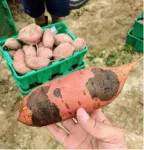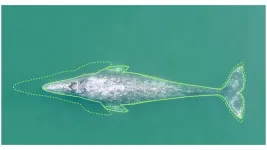(Press-News.org) WASHINGTON – A new detailed analysis of a patient’s second cancer after receiving CAR-T therapy for the initial cancer provides rare but important insights intended to offer helpful guidance for oncologists and pathologists about the clinical presentation and pathologic features involved in a CAR-T related second cancer.
The finding is reported June 13, 2024, in the New England Journal of Medicine.
CAR-T therapy is described by many as a new and promising treatment for blood cancers. CAR-T therapy is made from a patient’s own cells whereby immune system T cells are collected and re-engineered in the laboratory to produce proteins on their surface, called chimeric antigen receptors, or CARs. The CARs can recognize and then bind to specific proteins on the surface of cancer cells. The therapy is used to treat blood cancers such as multiple myeloma, the type of cancer the patient in the case study had when treated with CAR-T.
“The established value of CAR-T treatment and its benefits to cancer patients is significant,” says the study’s first author, Metin Ozdemirli, MD, PhD, professor of pathology at Georgetown University School of Medicine and attending physician and director of Hematopathology and Hematology Laboratories at MedStar Georgetown University Hospital. “Our case study describes a rare event in a patient who received CAR-T therapy and provides very useful information for physicians treating patients with this approach. Armed with our insights, physicians can be on the lookout for similar conditions and potentially detect secondary tumors earlier and manage them better.”
Of the estimated 30,000 patients treated with CAR-T therapy, reported second cancers are rare; the U.S. FDA has tracked approximately 25 cases of CAR-T cell second cancers, usually lymphomas, as occurred in the patient in this case study following CAR-T cell therapy.
How the CAR-T cell became a lymphoma is not known. It is possible that the cells had lymphoma-causing mutations when they were originally collected from the patient and CAR-T treatment caused activation and expansion of those cells; or the mutations might have occurred when the CAR-T cells were prepared outside the patient; or the CAR-T cells may have acquired the mutations after they were given back to the patient; or any combination of these circumstances.
Four months after receiving CAR-T therapy, the patient in the case study developed progressively worsening non-bloody diarrhea and lost 12 pounds. Results of bloods tests led to an endoscopic exam revealing ulcerations in the duodenum, the first part of the small intestine. The patient received treatment, but symptoms persisted, resembling an autoimmune disease. After numerous additional tests, biopsies taken revealed the culprit – indolent T-cell lymphoma of the gastrointestinal tract, similar to other cases, but further molecular analysis showed this to be a CAR-T positive case.
Ozdemirli says this case study suggests that physicians treating patients with CAR-T should always consider CAR-T a potential source for new cancers and autoimmune problems. “When we know what to look for ahead of time, it becomes easier to catch problems earlier,” he says.
Ozdemirli also points out, “An interesting finding here is the type of cells that survived the initial treatment and became cancerous. Immune cells that are collected from patients to prepare the CAR-T cocktail are not a homogenous single-cell type. They contain a mixture of multiple cells, and in the case of this patient, what is called a helper T cell, an essential infection-fighting cell, unexpectedly was the culprit.”
Though uncommon, second cancers following chemotherapy or radiation therapy can develop. Just like any tissue in the body has the risk of developing cancer during a lifespan, CAR-T cells carry the same risk. Ozdemirli says so far there is no evidence to suggest that the process of preparing the CAR-T population outside the body increases that risk.
Importantly for diagnostic and treatment purposes in the future, the researchers note that switchable cell therapies might allow patients to take a medication to tune the amount of CAR-T cell activity from day to day, hopefully reducing toxic side effects. Advancing this research and knowledge is an important next step for the investigators.
###
In addition to Ozdemirli the co-authors include Thomas M. Loughney, M.D., Emre Deniz, Ph.D., Joeffrey J. Chahine, Ph.D. and Aykut Üren, M.D. at Georgetown University; Maher Albitar, M.D., Genomic Testing Cooperative, Irvine, CA; Stefania Pittaluga, M.D., NIH, Bethesda, MD; Sam Sadigh, M.D., Brigham and Women’s Hospital, Boston; and Philippe Armand, M.D., Ph.D. and Kenneth C. Anderson, M.D., Dana-Farber Cancer Institute, Harvard Medical School, Boston.
This work received no external funding.
Disclosures provided by the authors are available with the full text of this article at NEJM.org. Dr. Ozdemirli has nothing to disclose.
END
A large study by researchers at Stanford Medicine has found that the risk of secondary blood cancers after CAR-T cell therapy — a cell-based cancer treatment that exploded on the scene in 2017 as a treatment for intractable blood cancers — is low, despite a Food and Drug Administration warning.
In November 2023, the FDA issued a warning about a risk of secondary cancers — particularly blood cancers — that may be associated with CAR-T cell therapy. The warning was preceded by a rising tide of ...
COLUMBUS, Ohio – In response to stressful or dangerous stimuli, nerve cells in the spinal cord activate involuntary, autonomic reflexes often referred to as “fight or flight” responses.
These protective responses cause changes in blood pressure and the release of stress hormones into the blood stream. Normally, these responses are short-lived and well-controlled, but this changes after a traumatic spinal cord injury.
A first-ever study published in the journal Science Translational Research identifies a ...
Reno, Nev. (June 12, 2024) – The Western U.S. is heavily reliant on mountain snowpacks and their gradual melt for water storage and supply, and climate change is expected to upend the reliability of this natural process. Many agricultural communities in this part of the country are examining ways to adapt to a future with less water, and new research shows that a focus on supplementing water supply by expanding reservoir capacity won’t be enough to avert future water crises.
Led by scientists at the Desert Research Institute ...
EMBARGOED FOR RELEASE UNTIL 4 P.M. ET, WEDNESDAY, JUNE 12, 2024
MINNEAPOLIS – People who give birth to infants less than 5.5 pounds may be more likely to have memory and thinking problems later in life than people who give birth to infants who do not have a low birth weight, according to a study published in the June 12, 2024, online issue of Neurology®, the medical journal of the American Academy of Neurology. The effect on memory and thinking skills was equivalent to one to two years of aging for those with low-birth-weight deliveries.
The study does not prove that delivery of a low-birth-weight ...
EMBARGOED FOR RELEASE UNTIL 4 P.M. ET, WEDNESDAY, JUNE 12, 2024
MINNEAPOLIS – People who experience prolonged depressive symptoms starting in young adulthood may have worse thinking and memory skills in middle age, according to a study published in the June 12, 2024, online issue of Neurology®, the medical journal of the American Academy of Neurology. The study also found that depressive symptoms were experienced more often by Black adults than white adults.
“The processes that lead to dementia begin long before signs of the disease become apparent, and previous research has shown that Black adults have a higher risk of dementia than white adults,” said study author ...
Philadelphia (June 12, 2024) – A new study published in International Journal of Nursing Studies showed that individuals with Covid-19 were more likely to die in hospitals that were chronically understaffed before the pandemic. This study is one of the first to document the continuing public health dangers of permitting so many U.S. hospitals to ration nursing care by understaffing nursing services.
The study, conducted by researchers at the Center for Health Outcomes and Policy Research (CHOPR) at the University ...
By late in the pandemic more than 96% of individuals in the U.S. ages 16 and older had COVID-19 antibodies from infection or vaccination. However, immunity from the virus tends to wane over time. Uptake of the boosters has been quite low, meaning that over time the current high levels of protection will dissipate.
During the COVID-19 pandemic, at-home antigen tests became widely accepted for detecting infection. In a new joint study by the George Washington University, the University of North Carolina, and others, researchers looked into the benefits of using at-home antibody tests to detect immunity and to make decisions about the need for a COVID-19 booster shot - something ...
Sweetpotato black rot is a devastating disease caused by the fungus Ceratocystis fimbriata. Since the late 1800s, black rot of sweetpotato has threatened to destroy as much as 30% of the sweetpotato crop in the United States. In 2015, all sweetpotato-producing states in the United States experienced one of the worst outbreaks recorded in history, with up to 60% losses reported. While fungicides can help manage the disease, they are not a sustainable solution, especially with volatile restrictions on fungicide residues among major export markets. An additional ...
Gray whales that spend their summers feeding in the shallow waters off the Pacific Northwest coast have undergone a significant decline in body length since around the year 2000, a new Oregon State University study found.
The smaller size could have major consequences for the health and reproductive success of the affected whales, and also raises alarm bells about the state of the food web in which they coexist, researchers say.
“This could be an early warning sign that the abundance of this population is starting to decline, or is not healthy,” said K.C. Bierlich, co-author on the study and an assistant professor at OSU’s ...
Shelter dogs awaiting adoption fare better with a canine companion than when they’re housed alone, according to new research from Virginia Tech.
The study, led by Erica Feuerbacher, associate professor in the College of Agriculture and Life Sciences’ School of Animal Sciences, revealed that companiable dogs housed together showed fewer signs of stress and were adopted more quickly than dogs that were housed by themselves.
Nearly 4 million dogs enter shelters every year, according to the American Society for the Prevention of Cruelty to Animals. The study’s findings offer one possible solution for animal shelters ...




